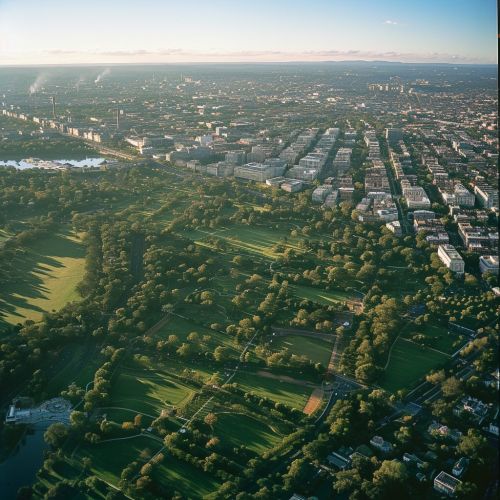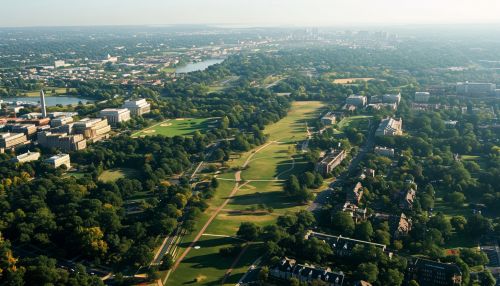Geography of Washington, D.C.
Geography
Washington, D.C., the capital of the United States, is located on the east coast of the country, nestled between the states of Maryland and Virginia. It is situated on the northern bank of the Potomac River and is approximately 68 square miles in area.


Topography
The topography of Washington, D.C. is varied, with the highest natural elevation in the city being 409 feet above sea level at Fort Reno Park, and the lowest being sea level along the Potomac River. The city has a number of creeks and streams, including Rock Creek, which flows into the Potomac River and divides the Northwest quadrant of the city from the Northeast and Southwest quadrants.
Climate
Washington, D.C. experiences a humid subtropical climate, characterized by hot, humid summers and generally mild to cool winters. The city experiences four distinct seasons, with spring and fall being particularly pleasant. Precipitation is distributed evenly throughout the year, with a slight peak in summer due to thunderstorms.
Urban Layout
The layout of Washington, D.C. is unique among American cities. It was designed by Pierre Charles L'Enfant, a French-born architect and city planner who envisioned wide avenues, public squares, and grand buildings. The city is divided into four quadrants: Northwest, Northeast, Southwest, and Southeast, with the United States Capitol at the center of the quadrant system.
Parks and Green Spaces
Washington, D.C. is home to numerous parks and green spaces, the most famous of which is the National Mall, a large, open park in downtown D.C. that hosts many of the city's monuments and museums. Other notable parks include Rock Creek Park, one of the largest urban parks in the U.S., and the United States National Arboretum.
Environmental Issues
Like many urban areas, Washington, D.C. faces a number of environmental challenges, including air and water pollution, waste management, and urban heat island effect. The city has implemented various initiatives to combat these issues, such as green building requirements, recycling programs, and initiatives to increase tree canopy cover.
